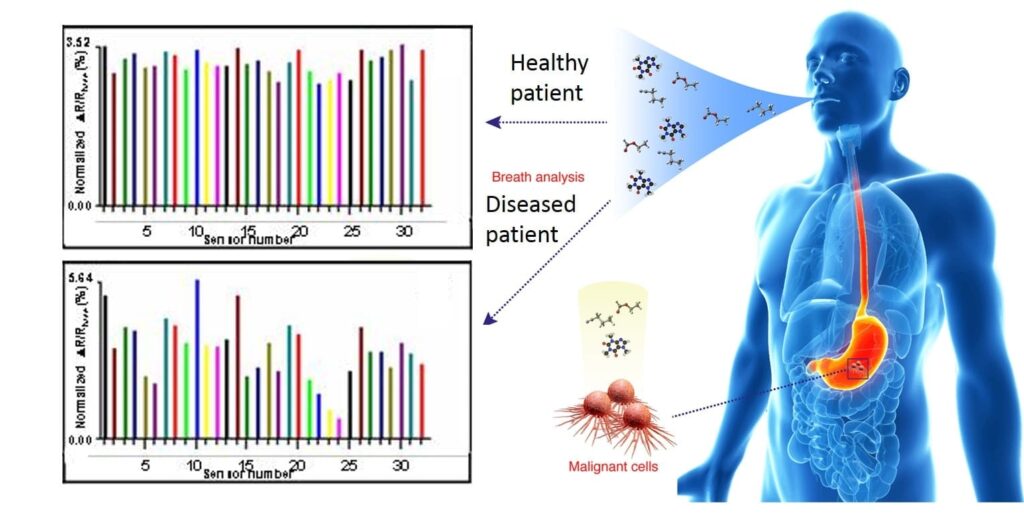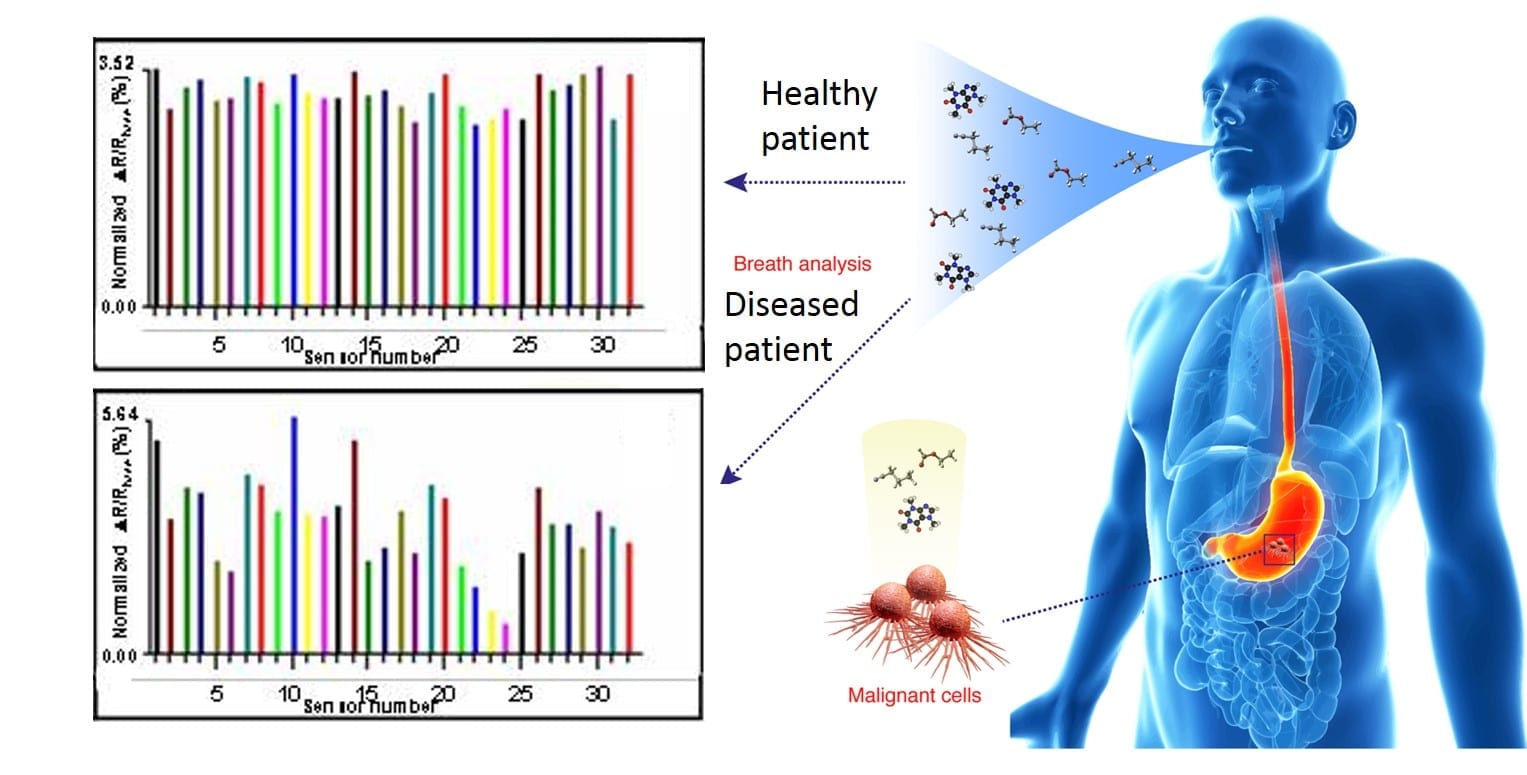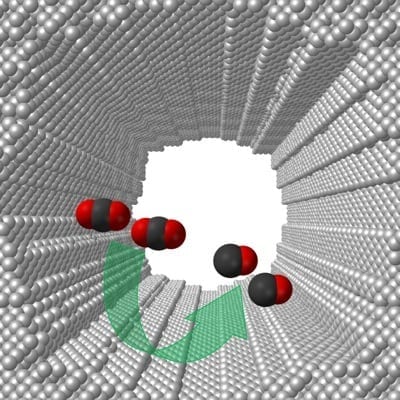
University of Adelaide physics researchers have developed a new type of laser that will enable exciting new advances in areas as diverse as breath analysis for disease diagnosis and remote sensing of critical greenhouse gases.
Published in the journal Optics Letters, the researchers from the University’s Institute for Photonics and Advanced Sensing and the School of Chemistry and Physics describe how they have been able to produce 25 times more light emission than other lasers operating at a similar wavelength – opening the way for detection of very low concentrations of gases.
“This laser has significantly more power and is much more efficient than other lasers operating in this frequency range,” says Ori Henderson-Sapir, PhD researcher. “Using a novel approach, we’ve been able to overcome the significant technical hurdles that have prevented fibre lasers from producing sufficient power in the mid-infrared.”
The new laser operates in the mid-infrared frequency range – the same wavelength band where many important hydrocarbon gases absorb light.
“Probing this region of the electromagnetic spectrum, with the high power we’ve achieved, means we will be able to detect these gases with a high degree of sensitivity,” says Project Leader Dr David Ottaway. “For instance, it should enable the possibility of analysing trace gases in exhaled breath in the doctors’ surgery.”
Research has shown that with various diseases, minute amounts of gases not normally exhaled can be detected in the breath; for example, acetone can be detected in the breath when someone has diabetes.
Other potential applications include detection in the atmosphere of methane and ethane which are important gases in global warming.
“The main limitation to date with laser detection of these gases has been the lack of suitable light sources that can produce enough energy in this part of the spectrum,” says Dr Ottaway. “The few available sources are generally expensive and bulky and, therefore, not suitable for widespread use.”
The new laser uses an optical fibre which is easier to work with, less bulky and more portable, and much more cost effective to produce than other types of laser.
The Latest on: Breath analysis for disease diagnosis
[google_news title=”” keyword=”Breath analysis for disease diagnosis” num_posts=”10″ blurb_length=”0″ show_thumb=”left”]
via Google News
The Latest on: Breath analysis for disease diagnosis
- Trajectory of Symptom Severity Aids Follow-Up in Head and Neck Cancer Treatmenton April 27, 2024 at 10:00 am
As symptom severity can vary by patient, it is key for nurses to increase assessment for early intervention of patients with head and neck cancer following treatment, according to Meredith Cummings, ...
- New algorithm could provide early warning for asthma attackson April 24, 2024 at 11:45 am
A University of Texas at Dallas researcher and his international colleagues have developed an algorithm that might one day provide early medical alerts about the onset of asthma attacks or other ...
- Understanding pneumonia & Parkinson’s diseaseon April 23, 2024 at 11:09 pm
HYDERABAD: While some diseases stem from unseen bacteria and viruses, others arise from inherent disorders or environmental factors. Regardless, understanding t ...
- Lung charity issues new report to address ‘vicious cycle’ of respiratory issues in Northern Irelandon April 22, 2024 at 9:40 pm
A leading lung and asthma charity has issued a new report with recommendations on how 7,500 hospital bed days could be saved in Northern Ireland.
- Could breath analysis help with gut issues?on April 15, 2024 at 2:07 am
Through OMED Health, Owlstone can supply breath tests for SIBO and food intolerances to people across the UK for just £250. This service includes guidance from an associated consultant specialist who ...
- What disease areas can benefit from breath analysis?on April 14, 2024 at 9:54 pm
This discussion includes what disease areas, breath sampling, and analysis can be utilized for ... signal the presence of cancer long before any symptoms begin to show. Lung cancer is among ...
- How Is Metastatic Breast Cancer Diagnosed?on April 12, 2024 at 5:30 am
Medically reviewed by Marla Anderson, MD Metastatic breast cancer (MBC) is an advanced form of breast cancer that occurs when cancer cells spread beyond the breast and nearby lymph nodes to other ...
- What Is Severe Asthma?on April 2, 2024 at 4:59 pm
Asthma is a chronic disease that causes the airways ... their treatment plan but still experience asthma symptoms like shortness of breath, chronic cough, wheezing, chest tightness, and rapid ...
- New technology could revolutionize valvular heart disease careon March 27, 2024 at 5:01 pm
Roughly 25,000 Americans die each year from valvular heart disease, but researchers ... condition advances enough to create symptoms such as shortness of breath, chest pain or fatigue.
- This is what flying does to your body, according to doctorson February 16, 2024 at 7:57 am
Deep vein thrombosis (DVT) and blood clots are a particular risk for those without heart disease too, for all the same reasons. “Blood clots can occur for up to one month after flying, so be alert to ...
via Bing News











